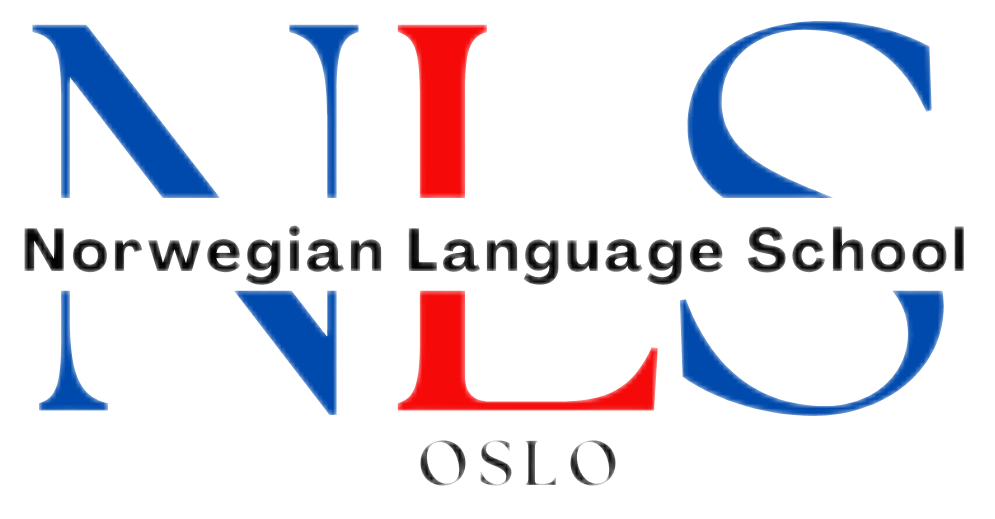

Essential Spanish for Marketing and Advertising Professionals
In today’s globalized world, the ability to communicate effectively in multiple languages is becoming increasingly important, especially in the marketing and advertising industry. Spanish, in particular, is a language that holds great significance for professionals in this field. This blog post aims to provide marketing and advertising professionals with a comprehensive guide to learning and utilizing Spanish language skills in their work.
The purpose of this blog post is to equip marketing and advertising professionals with the necessary tools and resources to effectively communicate with Spanish-speaking audiences. It will cover various aspects of the Spanish language, including vocabulary, grammar, cultural awareness, and marketing strategies. By the end of this post, readers will have a solid understanding of how to incorporate Spanish into their marketing and advertising efforts.
Table of Contents
ToggleUnderstanding the Importance of Spanish Language in the Marketing Industry
To fully grasp the importance of Spanish language skills in the marketing industry, it is essential to consider the growing Hispanic population in the United States. According to the U.S. Census Bureau, Hispanics are the largest minority group in the country, accounting for approximately 18% of the total population. This demographic represents a significant consumer market that cannot be ignored by marketers.
Being bilingual in English and Spanish provides numerous benefits for professionals in the marketing industry. It allows them to effectively communicate with a wider range of consumers and tap into new markets. Bilingual marketers have a unique advantage when it comes to understanding cultural nuances and tailoring their messages to resonate with Spanish-speaking audiences.
Several successful marketing campaigns have targeted Spanish-speaking audiences with great success. For example, Coca-Cola’s “Share a Coke” campaign was adapted for Spanish-speaking countries with personalized bottles featuring popular Hispanic names. This campaign not only increased brand awareness but also fostered a sense of inclusivity among Spanish-speaking consumers.
Spanish Vocabulary and Phrases for Marketing and Advertising Professionals
To effectively communicate with Spanish-speaking audiences, marketing and advertising professionals need to familiarize themselves with common marketing and advertising terms and phrases in Spanish. Some essential vocabulary includes “mercado” (market), “consumidor” (consumer), “marca” (brand), “publicidad” (advertising), and “estrategia” (strategy).
Learning and memorizing new vocabulary can be challenging, but there are several tips that can make the process easier. One effective method is to create flashcards with the Spanish word on one side and the English translation on the other. Another tip is to practice using the new vocabulary in context by incorporating it into sentences or conversations.
Incorporating Spanish language into marketing materials is crucial for effectively reaching Spanish-speaking audiences. This can be done by translating existing content or creating original content specifically for Spanish-speaking markets. It is important to ensure that the translated content accurately conveys the intended message and maintains the brand’s tone and voice.
Spanske ord relaterte til markedsføring og reklame
- Marketing / Markedsføring
- Publicidad / Reklame
- Marca / Merkevare
- Campaña / Kampanje
- Producto / Produkt
- Público objetivo / Målgruppe
- Investigación de mercado / Markedsundersøkelse
- Promoción / Kampanje
- Anuncio / Annonse
- Ventas / Salg
- Consumidor / Forbruker
- Estrategia de marketing / Markedsstrategi
- Relaciones públicas / PR (Offentlig forhold)
- Análisis de mercado / Markedsanalyse
- Redes sociales / Sosiale medier
- Agencia de publicidad / Reklamebyrå
- Anuncio de banner / Banners annonse
- Llamado a la acción / Oppfordring til handling
- Página de aterrizaje / Landingsside
- Segmentación de mercado / Markedssegmentering
- Mezcla de marketing / Markedsmiks
- Colocación de producto / Produktplassering
- Retorno de inversión (ROI) / Avkastning på investering (ROI)
Spanish Grammar and Syntax for Effective Communication in Marketing
Understanding Spanish grammar rules and syntax is essential for effective communication in marketing. Some key grammar rules to keep in mind include noun-adjective agreement, verb conjugation, and word order. For example, in Spanish, adjectives must agree in gender and number with the nouns they modify.
Improving Spanish language skills for effective communication in marketing requires consistent practice and exposure to the language. Immersion programs, language exchange programs, and online courses can all be valuable resources for improving grammar and syntax. It is also helpful to engage with native Spanish speakers to gain a better understanding of how the language is used in real-life situations.
When creating marketing materials in Spanish, it is important to avoid common grammar mistakes that can undermine the credibility of the message. Some common mistakes to avoid include incorrect verb conjugation, improper use of prepositions, and confusion between similar-sounding words. Proofreading by a native Spanish speaker or hiring a professional translator can help ensure accuracy.
Spanish Cultural Awareness in Marketing and Advertising Strategies
Cultural awareness is a crucial aspect of marketing and advertising, especially when targeting Spanish-speaking audiences. Understanding the cultural differences between Spanish-speaking countries and the United States is essential for creating effective marketing strategies. For example, while humor may be highly valued in American advertising, it may not resonate as well with Spanish-speaking audiences.
Some cultural differences to consider include language variations, traditions, customs, and values. It is important to adapt marketing strategies to different cultural contexts to ensure that messages are received positively and resonate with the target audience. This can be achieved by conducting thorough research and consulting with local experts or cultural consultants.
Spanish Marketing and Advertising Case Studies

Examining successful marketing and advertising campaigns targeting Spanish-speaking audiences can provide valuable insights and lessons for professionals in the industry. One example is McDonald’s “Me Encanta” campaign, which successfully targeted Hispanic consumers by incorporating cultural elements such as music, food, and family values. This campaign resulted in increased brand loyalty and sales among the Hispanic demographic.
Analyzing the strategies and tactics used in these case studies can help marketers understand what works and what doesn’t when targeting Spanish-speaking audiences. Some common themes include cultural relevance, inclusivity, and authenticity. By understanding these strategies, marketers can apply similar tactics to their own campaigns.
Tips for Conducting Market Research in Spanish-Speaking Countries
Conducting market research in Spanish-speaking countries requires a thorough understanding of the local culture, language, and consumer behavior. The market research process involves gathering data on consumer preferences, market trends, and competitor analysis.
To conduct effective market research in Spanish, it is important to have a team of bilingual researchers who can accurately interpret data and conduct interviews or surveys in Spanish. It is also crucial to adapt research methodologies to suit the local context and cultural nuances.
Common mistakes to avoid in market research in Spanish-speaking countries include relying solely on translated questionnaires or surveys, overlooking cultural differences, and failing to consider regional variations within a country. It is important to invest time and resources into understanding the target market and conducting research that is culturally sensitive and relevant.
Spanish Social Media Marketing Strategies and Best Practices
Social media marketing is a powerful tool for reaching Spanish-speaking audiences. To create effective social media marketing campaigns in Spanish, it is important to understand the social media landscape in Spanish-speaking countries and adapt strategies accordingly.
Some best practices for social media marketing in Spanish include creating content that is culturally relevant, engaging with followers in their preferred language, and leveraging popular platforms such as Facebook, Instagram, and Twitter. It is also important to monitor and respond to comments and messages in a timely manner to build trust and foster engagement.
Successful social media marketing campaigns in Spanish include Airbnb’s “Live There” campaign, which featured authentic stories from local hosts in Spanish-speaking countries. This campaign resonated with Spanish-speaking audiences by highlighting the unique experiences that Airbnb offers.
Spanish Language Tools and Resources for Marketing and Advertising Professionals
There are numerous language learning tools and resources available for marketing and advertising professionals looking to improve their Spanish language skills. Online courses, language exchange programs, and mobile apps can all be valuable resources for learning vocabulary, grammar, and cultural nuances.
Some recommended online courses for marketing and advertising professionals include those offered by reputable language learning platforms such as Duolingo, Babbel, and Rosetta Stone. These courses provide structured lessons that cover various aspects of the Spanish language.
Incorporating language learning into daily routines can also be beneficial. This can be done by listening to podcasts or music in Spanish, watching movies or TV shows with subtitles, or practicing conversations with native speakers through language exchange programs.
Spanish Language Training and Development for Marketing and Advertising Professionals
Language training and development programs specifically tailored for marketing and advertising professionals can provide targeted instruction on how to effectively use Spanish language skills in the industry. These programs often include specialized courses on marketing terminology, cultural awareness, and communication strategies.
The benefits of language training and development for marketing and advertising professionals are numerous. It allows professionals to expand their skill set, increase their marketability, and effectively communicate with Spanish-speaking audiences. Language training programs can also provide networking opportunities and connections within the industry.
Some recommended language training programs and courses for marketing and advertising professionals include those offered by universities or language institutes that specialize in business language training. These programs often offer flexible schedules and customized curricula to meet the specific needs of professionals in the industry.
In conclusion, Spanish language skills are increasingly important for marketing and advertising professionals in today’s globalized world. By understanding the importance of Spanish language in the marketing industry, learning key vocabulary and phrases, improving grammar and syntax, being culturally aware, studying successful case studies, conducting market research, utilizing social media strategies, accessing language tools and resources, and participating in language training and development programs, professionals can effectively communicate with Spanish-speaking audiences and tap into new markets.
If you want to learn Spanish, you can register for classes here. We look forward to hearing from you and helping you become fluent in Spanish!
If you want to learn Norwegian, you can register for classes here. We look forward to hearing from you and helping you become fluent in Norwegian.





